Gallery: Dark Matter Throughout the Universe
The Bullet Cluster
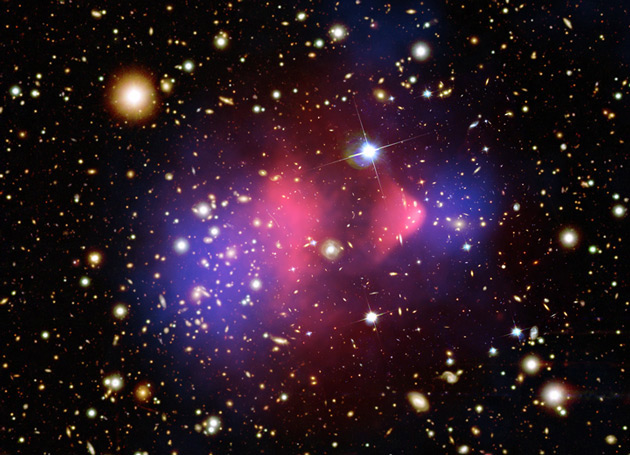
Hot gas in this collision of galaxy clusters is seen as two pink clumps that contain most of the normal matter. The bullet-shaped clump on the right is hot gas from one cluster, which passed through the hot gas from the other larger cluster. Other telescopes were used to detect the bulk of the matter in the clusters, which turns out to be dark matter (highlighted in blue).
Hubble Reveals Ghostly Ring of Dark Matter
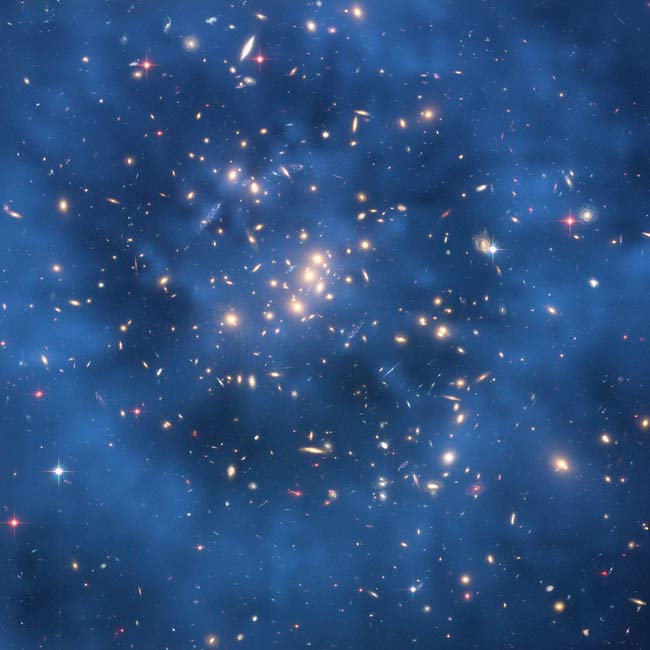
A ghostly ring of dark matter floating in the galaxy cluster ZwCl0024+1652, one of the strongest pieces of evidence to date for the existence of dark matter. Astronomers think the dark-matter ring was produced from a collision between two gigantic clusters.
Dark Matter's Link to Brilliant Galaxies Confirmed
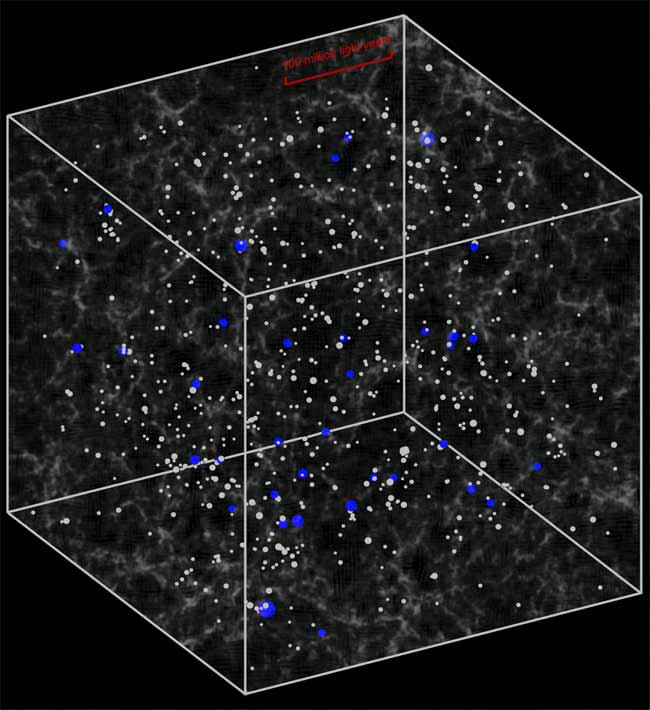
The illustration shows the distribution of dark matter, massive halos, and luminous quasars in a simulation of the early universe, shown 1.6 billion years after the Big Bang. Gray-colored filamentary structure shows the distribution of dark matter; small white circles mark concentrated "halos" of dark matter more massive than 3 trillion times the mass of the sun; larger, blue circles mark the most massive halos, more than 7 trillion times of the sun, which host the most luminous quasars. The strong clustering of the quasars in the SDSS sample demonstrates that they reside in these rare, very massive halos. The box shown is 360 million light years across.
Tiny Galaxies Hide Dark Secret
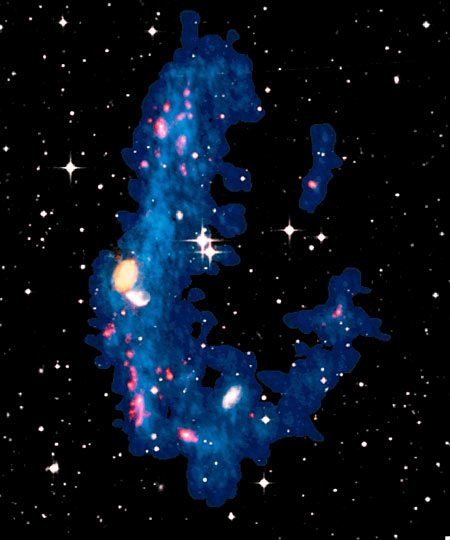
Galaxy NGC5291 (orange, at the center) and its ring of debris (in blue) as seen by the Very Large Array interferometer. Researchers have found evidence for the presence of dark matter in dense star-forming groups (shown in red), where 'recycled' dwarf galaxies exist.
New Model of the Early Universe

The universe, 590 million years after the Big Bang, may have looked like this, according to computer simulations, with some stretches of dark matter (green) and galaxies with varying luminosity of star formation (yellow is brightest).
Invisible Galaxy
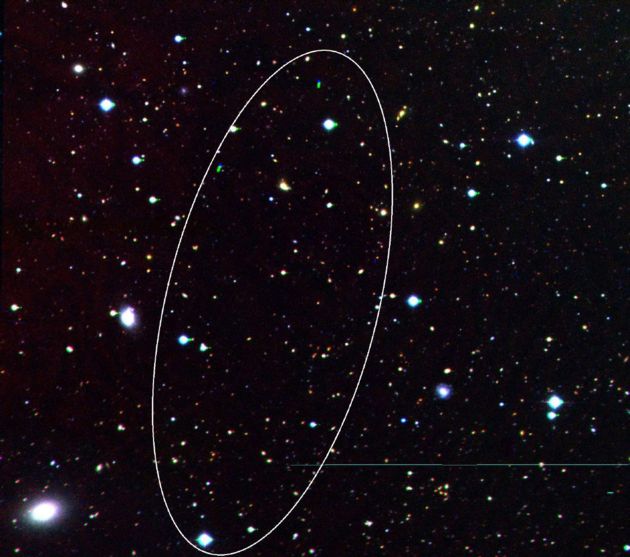
This ellipse shows a region of sky where a galaxy made of dark matter is thought to exist.
Dark Matter Filaments

The supposed distribution of dark matter throughout the universe is represented in this computer model.
Breaking space news, the latest updates on rocket launches, skywatching events and more!
Pools of Invisible Matter Mapped in Space

This Hubble Space Telescope map shows the four clumps of dark matter in the supercluster Abell 901/902.
Milky Way's Dark Matter Clumpier Than Thought
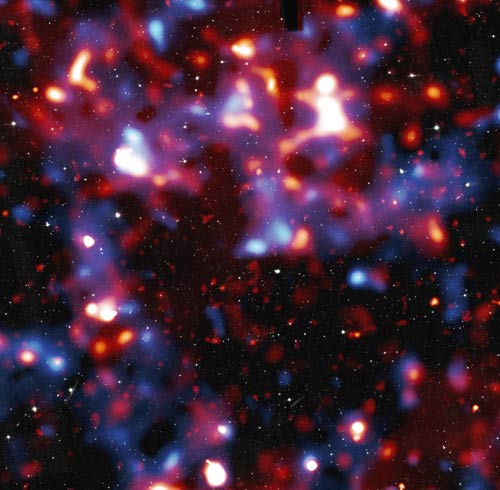
The universe’s normal and invisible dark matter is revealed in this portrait assembled from space telescope observations. Normal matter appears in red, its distribution observed primarily by the European Space Agency’s XMM/Newton telescope. The blue regions distinguish areas of invisible and elusive dark matter as recorded by the Hubble Space Telescope. The gray areas denote stars and galaxies, the visible light of which was also observed by Hubble.
Dark Matter Simulation
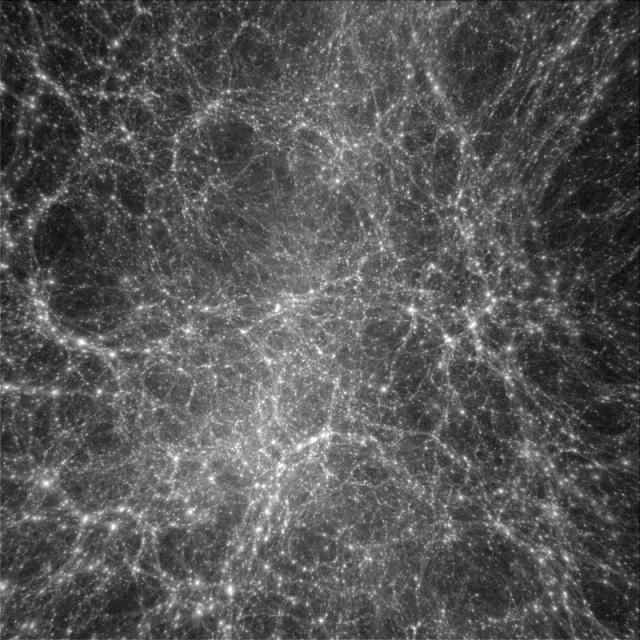
A computer simulation shows dark matter is distributed in a clumpy but organized manner. In the figure, high density regions appear bright whereas dark regions are nearly, but not completely, empty.
Powerful Cosmic Collision Creates Divorce of Matter
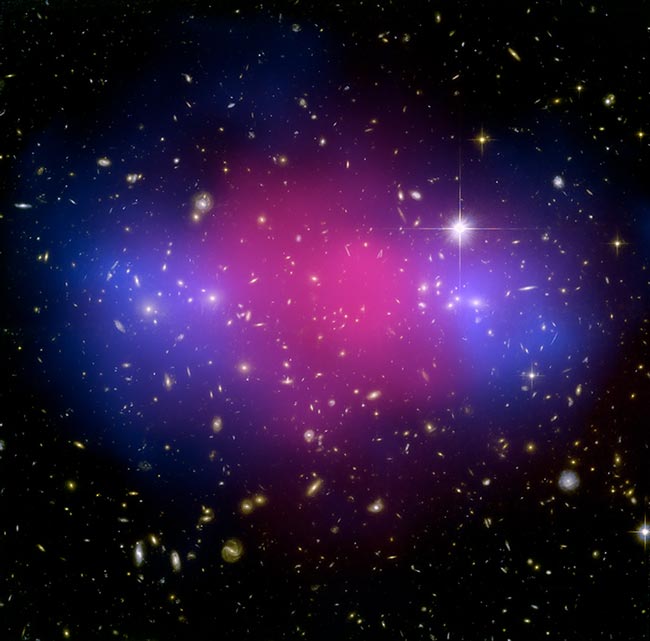
Another powerful collision of galaxy clusters has been captured with NASA's Chandra X-ray Observatory and Hubble Space Telescope. Like its famous cousin, the so-called Bullet Cluster, this clash of clusters shows a clear separation between dark and ordinary matter. This helps answer a crucial question about whether dark matter interacts with itself in ways other than via gravitational forces.
Join our Space Forums to keep talking space on the latest missions, night sky and more! And if you have a news tip, correction or comment, let us know at: community@space.com.

Space.com is the premier source of space exploration, innovation and astronomy news, chronicling (and celebrating) humanity's ongoing expansion across the final frontier. Originally founded in 1999, Space.com is, and always has been, the passion of writers and editors who are space fans and also trained journalists. Our current news team consists of Editor-in-Chief Tariq Malik; Editor Hanneke Weitering, Senior Space Writer Mike Wall; Senior Writer Meghan Bartels; Senior Writer Chelsea Gohd, Senior Writer Tereza Pultarova and Staff Writer Alexander Cox, focusing on e-commerce. Senior Producer Steve Spaleta oversees our space videos, with Diana Whitcroft as our Social Media Editor.
